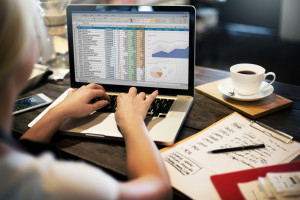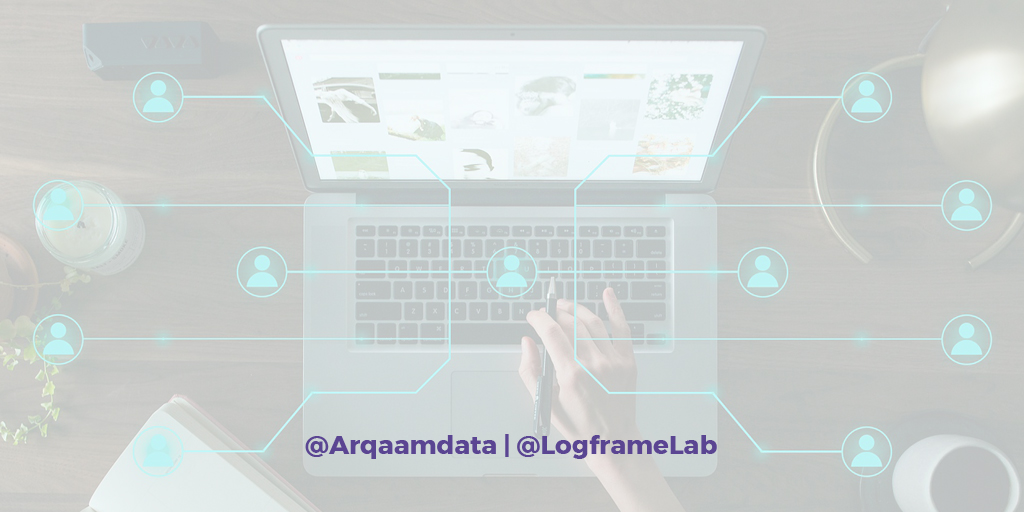
“NGO monitoring and evaluation should reveal where change is happening, how it is happening and to what degree… Without quality, timely data to inform decision-making, monitoring processes can easily turn into clerical tasks performed for compliance’s sake. This is where digital data capture systems can help.”
There’s no way around it: the humanitarian sector is trailing far behind other sectors in terms of digital transformation.
Technology has a lot to offer NGO monitoring and evaluation. From artificial intelligence (AI) and machine learning to blockchain and digital data capture systems, NGOs are increasingly incorporating technology into their operations.
Here at Arqaam, we believe emerging technologies can improve development programme performance. Authors of ‘The Smart Nonprofit’ Beth Kanter and Allison Fine summed it up well in an interview. They articulated a vision for how the sector could incorporate new technologies into operations:
“Our hope for the sector is that we’ll be able to find the sweet spot where the bots are doing what they should be doing, which are those ROTE tasks, and the humans should be doing uniquely human things – storytelling, problem-solving, relationship-building.”
There is, however, a caveat.
We believe organisations shouldn’t incorporate technology into operations for the sake of it. Technology should always be useful. If your organisation has a system that works well, or the technology causes more problems than it solves, it’s best not to use it
Automate what you can automate, but some things are better left to humans.
That said, one simple way to harness the benefits of new technology is to incorporate digital data capture systems into operations, particularly in the monitoring and evaluation processes. Capturing, recording and synthesising data are time-consuming activities prone to human error. Digital data capture systems can help mitigate these kinds of errors, amongst lots of other things.
There are a range of digital data capture systems on the market that you can customise to suit the needs of your organisation. While they might not suit every organisation, we believe there are several benefits to digital data capture systems.
What are digital data capture systems?
 Digital data systems are software that captures and stores information. They are hosted on local servers or on the cloud. Cloud technology lets users access shared storage via internet-compatible devices, such as phones or laptops. In the office or on the road, users can access information stored on the cloud as long as they have an internet connection.
Digital data systems are software that captures and stores information. They are hosted on local servers or on the cloud. Cloud technology lets users access shared storage via internet-compatible devices, such as phones or laptops. In the office or on the road, users can access information stored on the cloud as long as they have an internet connection.
Cloud technology has improved leaps and bounds in recent years. While ‘digital transformation’ has been a buzzword in the corporate sector for a while now, the Covid19 pandemic has functioned as a catalyst for accelerated cloud adoption. The humanitarian sector, as it often is, is still playing catch-up.
Outside of the humanitarian sector, healthcare providers use digital data capture systems to store patient information. It sure beats a filing cabinet! Like healthcare providers, most NGOs need to securely store and manage their data across multiple sites. This means there are also a range of use-cases for digital data capture systems inside the humanitarian sector, too.
There are a host of benefits relating to the incorporation of digital data capture systems, particularly cloud-based ones.
Benefits of digital data capture systems for NGO monitoring and evaluation
Easy data entry and management
 Digital data capture systems can simplify the data entry process. They often allow administrators to create protocols – sets of rules – that direct datasets to where they need to go. This could save your staff a lot of time manually entering data and managing it once it’s in the system.
Digital data capture systems can simplify the data entry process. They often allow administrators to create protocols – sets of rules – that direct datasets to where they need to go. This could save your staff a lot of time manually entering data and managing it once it’s in the system.
Accessible for staff in different locations
Digital data capture systems can improve data sharing across locations. If your NGO operates across multiple sites or you have staff that regularly travel, digital data capture systems will prove useful. Staff across different sites can seamlessly upload and access data as they need it. If you have a cloud-based system, staff in transit with an internet connection will also have access to the system. This means that your staff are more likely to have access to up-to-date data that can be used to inform decision-making processes and guide the implementation of projects. This is important, because interventions informed by data at all stages are more likely to succeed over the long term.
Enhanced security features
NGOs often store sensitive information pertaining to stakeholders. It is important organisations keep this information secure. Cyber security is a growing issue in the humanitarian sector as organisations invest in new communication tools. While new technology can be a good thing for efficiency and project outcomes, it can open organisations up to cyber crimes such as hacking or data leaks. Most digital data capture systems come with advanced security features to mitigate these risks. For more information on how to keep your organisation’s data safe, check out our blog post.
Promotes best data practices
A growing trend amongst many development actors is the over-collection of data. While data can be incredibly useful in terms of making informed decisions, too much data can have the opposite effect. Data minimalism – the art of only collecting the data that is needed – is best practice. It also reduces the risk of data exposure, potentially implicating stakeholders. Digital data capture systems can help your organisation refine and streamline datasets to avoid over-collecting data.
What can electronic data capture systems do for your NGO’s monitoring and evaluation?
 Monitoring and evaluation are two very different processes within the development project cycle. Monitoring refers to tracking a project’s process as it is happening, while evaluation refers to the assessment of the overall success of the project after its completion or at a mid-term point to be able to adjust implementation based on findings. Different parties usually perform the evaluation and monitoring processes. This ensures the integrity of the project.
Monitoring and evaluation are two very different processes within the development project cycle. Monitoring refers to tracking a project’s process as it is happening, while evaluation refers to the assessment of the overall success of the project after its completion or at a mid-term point to be able to adjust implementation based on findings. Different parties usually perform the evaluation and monitoring processes. This ensures the integrity of the project.
Both monitoring and evaluation should be informed by high quality, timely data. A UN report on mobilising data for sustainable development summed it up well with the following statement:
“Data are the lifeblood of decision–making and the raw material for accountability. Without high–quality data providing the right information on the right things at the right time, designing, monitoring and evaluating effective policies becomes almost impossible.”
There is a growing shift within the sector towards results-based monitoring and evaluation approaches. The ethos underpinning these approaches is that monitoring needs to reveal where change is happening, how it is happening and to what degree. Practitioners need systems in place to detect change as it happens. This ensures any unintended consequences are also detected. Project managers can thus make informed decisions and adjust the project as needed.
Without quality, timely data to inform decision-making, monitoring processes can easily turn into clerical tasks performed for compliance’s sake.
Digital data capture systems are not a silver bullet to solve all these problems. They can, however, assist organisations in obtaining, managing and synthesising data that is collected through monitoring to better guide decision-making processes.
If you want to learn more about digital data systems or digital transformation for your organisation, check out our expert M&E consulting service here.
To understand how we collect and store data, see our Data Collection and Cookies Policy page.

